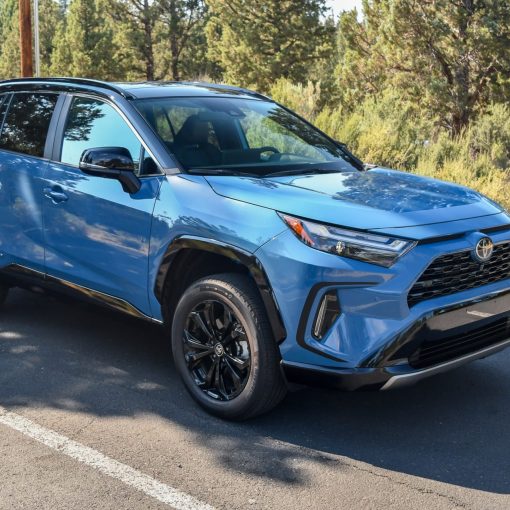Owning a vintage vehicle is akin to possessing a unique piece of automotive history. Whether it’s an iconic Aston Martin, a classic Rolls Royce, or another cherished model, these vehicles represent a moment in time and hold significant historical value. However, preserving such a vehicle takes more than simply keeping it parked in your garage. To maintain its beauty, performance, and longevity, a thoughtful approach to care and upkeep is essential. In this guide, we’ll cover five key ways to properly maintain a vintage vehicle.
1. Store It in a Garage
The first step to preserving your vintage vehicle is ensuring that it’s stored in the right environment. Storage conditions play a critical role in keeping your car in top condition. Even if the weather outside seems fine, exposure to harsh elements can cause serious damage to older vehicles.
For instance, cold weather can lead to more extensive engine warm-up times, placing additional stress on mechanical parts. Fluids like oil become thicker in cold temperatures, which means the engine will struggle to circulate them properly, causing increased wear. Furthermore, humidity can also be an issue, leading to rust and corrosion over time.
The ideal storage solution for a vintage vehicle is a climate-controlled garage. This helps maintain the right temperature and humidity levels to protect both the exterior and internal components of the car. A well-maintained garage will shield the vehicle from rain, snow, and extreme heat, offering an environment where the car can rest without any unnecessary exposure to the elements.
2. Check the Fluids Regularly
Just like modern cars, vintage vehicles require regular fluid checks to ensure they are operating smoothly. However, given the age of the vehicle, the fluids in your vintage car may need extra attention.
For example, brake fluid, transmission fluid, and other essential lubricants should be checked periodically, but with vintage vehicles, you should be basing your checks on time rather than mileage. If your car is a collector’s item and not driven daily, it’s wise to inspect these fluids at least twice a year, regardless of how many miles the car has traveled.
Over time, fluids can become contaminated or degrade, so it’s essential to replace them regularly. For vintage vehicles, some parts may require specific types of fluids, which can differ from those used in modern vehicles. Always use the recommended fluids to ensure optimal performance and preserve the car’s longevity.
3. Use the Correct Fuel
When it comes to fueling a vintage vehicle, there’s one crucial element to consider that may not apply to modern cars: the lead additive. Most vehicles manufactured before the 1970s were designed to run on leaded fuel, a critical component that helped prevent engine knocking and prolonged engine life.
Since the UK banned leaded petrol in 1999, modern fuel does not contain the lead additives needed for vintage vehicles. Without this additive, older engines are at risk of valve seat recession—a condition that leads to poor engine performance and costly repairs. Fortunately, there are lead replacement fuels and fuel additives available today, designed specifically for vintage cars, which can be added to regular unleaded petrol to protect the engine.
It’s important to regularly check the fuel system and ensure you’re using the correct fuel to maintain the health of your engine. Failure to use the right fuel can result in significant damage over time, so don’t skimp on this crucial aspect of maintenance.
4. Learn From Other Vintage Car Owners
Vintage car ownership often means becoming part of a community of enthusiasts who share a passion for preserving classic cars. These owners can be invaluable resources for learning more about the nuances of maintaining a vintage vehicle, offering advice on everything from restoration projects to driving techniques.
One of the best ways to connect with other vintage car owners is by attending car shows, which provide ample opportunities to learn more about specific models, ask questions, and share experiences. For example, the Old Car Festival, which features over 700 cars built between 1900 and 1932, is an excellent place to learn about the Ford Model T or a 1925 Franklin sedan.
These communities also provide insight into DIY restoration projects and share tips on repairs and upgrades. Whether you’re restoring your own vintage car or simply seeking advice, these connections can be invaluable as you continue to care for your vehicle.
5. Wash and Prevent Rust
Regular cleaning and rust prevention are crucial to preserving the aesthetic and structural integrity of your vintage vehicle. Rust is one of the most common and destructive issues facing older cars, as many vintage vehicles were built with steel bodies that are prone to corrosion when exposed to moisture.
While washing your vehicle, it’s essential to take extra care. Use microfiber towels and pH-balanced car soaps to avoid scratching or damaging the paint. Gently cleaning your vintage car will help maintain its exterior appearance and prevent dirt buildup, which can lead to rust formation.
Additionally, you should pay particular attention to areas where rust may develop, such as the undercarriage and wheel wells, especially in areas with high humidity or harsh winters. Use protective products like rust inhibitors or undercarriage sprays to protect the vehicle’s metal parts. Regular inspections are also necessary to spot early signs of corrosion, so you can take action before it becomes a serious issue.
Wisely Preserving a Vintage Vehicle
Owning a vintage vehicle is not just about appreciating its history—it’s also about investing time and effort into keeping it in pristine condition. A vintage car, whether it’s a century-old classic or a 40-year-old sports car, requires special care to ensure it continues to run smoothly and looks stunning for years to come.
By following these five steps—storing your car in a climate-controlled garage, checking fluids regularly, using the correct fuel, learning from other vintage car owners, and washing and preventing rust—you can extend the life of your vintage vehicle and ensure it remains a cherished piece of automotive history.
In the end, it’s all about attention to detail and a long-term commitment to maintaining your car. With the right care, your vintage vehicle will continue to provide you with enjoyment, whether it’s on the road, in a car show, or simply admired in your garage.
So, put the time and effort into proper maintenance, and your vintage car will continue to shine, preserving its legacy for future generations to admire and enjoy.




